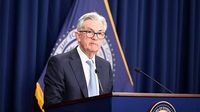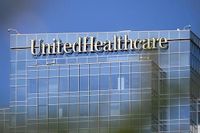Shares of UnitedHealth Group Inc. (UNH) plummeted by as much as 21% on Thursday, April 17, 2025, following a disappointing first quarter earnings report that missed expectations and a substantial cut to its full-year profit guidance. This sharp decline marked the company's most significant drop in over 25 years, sending ripples across the broader insurance industry and dragging down the blue-chip Dow Jones Industrial Average.
In its earnings report, UnitedHealth revealed that it now anticipates adjusted full-year profits to fall between $26 and $26.50 per share, a notable decrease from its previous forecast of $29.50 to $30 per share. The company reported adjusted earnings per share of $7.27, matching estimates but falling short of revenue expectations, with total revenue hitting $109.6 billion compared to the anticipated $111.6 billion, as per Bloomberg consensus estimates.
CEO Andrew Witty acknowledged the disappointing performance, stating, "We did not perform up to our expectations, and we are aggressively addressing those challenges to position us well for the years ahead." The company cited higher-than-anticipated costs related to its Medicare Advantage and Optum businesses as key factors in its revised forecast.
UnitedHealth's Medicare Advantage segment is set to serve an additional 800,000 individuals in 2025, while its Optum Health division is projected to add 650,000 net new patients. However, the company faced unexpected challenges, including rising medical costs that blindsided management as the first quarter closed. This led to the first earnings miss for UnitedHealth in more than a decade.
Witty further explained that government funding cuts during the Biden administration had reduced reimbursement rates for Medicare Advantage patients utilizing Optum Health services. This situation forced UnitedHealth to absorb more costs, significantly impacting its profit forecasts. As a result, senior patients in its Medicare Advantage business began utilizing services at a rate far exceeding initial projections.
Last year, the company reported a medical care ratio—indicating the percentage of premiums paid out as medical costs—of 85.5%, up from 83.2% the previous year. For 2025, UnitedHealth expects this ratio to rise to 87.5%. These figures reflect the increasing demand for medical services among seniors, which has been a growing concern for the company.
In addition to these challenges, UnitedHealth inherited patients from other insurers who were sicker than anticipated. Witty noted, "We added more new Medicare patients to Optum Health, a portion of whom were covered by plans that were exiting markets. They experienced a surprising lack of engagement last year, which led to 2025 reimbursement levels well below what we would expect and likely not reflective of their actual health status." This influx of sicker patients has compounded the company's difficulties.
The market's reaction to UnitedHealth's earnings report was swift. Dow futures dropped sharply, reflecting investor sentiment as the news spread. While other companies like American Express reported better-than-expected earnings, the overall atmosphere was dampened by UnitedHealth's stark outlook.
As of Thursday morning, April 17, 2025, UNH stock was trading around $470 in pre-market, reflecting a downward trend of about 20% following the earnings announcement. This decline sharply contrasts with the stock's year-to-date performance prior to the earnings report, where it had gained 16%, outperforming the broader S&P 500 index, which had fallen by 10% during the same period.
The volatility of UnitedHealth's stock over the past few years illustrates a broader trend in the healthcare sector. The company's annual returns have fluctuated significantly, showing 45% in 2021, 7% in 2022, 1% in 2023, and a decline of 2% in 2024. This latest downturn raises questions about the company's ability to rebound in a challenging economic environment.
Looking ahead, analysts are cautious about UnitedHealth's prospects. The company's forward price-to-earnings (P/E) ratio is currently at 19x based on the midpoint of its estimated forward earnings of $24.90. This valuation is below its average P/E ratio of 21x over the past three years, suggesting that investors are adjusting their expectations in light of the recent earnings miss and lowered guidance.
Despite the current challenges, there are some positive indicators. UnitedHealth's revenue grew 9.8% year-over-year in the first quarter, driven by strong performances in both its segments. The medical care ratio, while higher than last year, was a positive surprise, coming in at 84.8%, slightly better than the anticipated figure of 85.9%. Additionally, the company's overall operating profit margin improved by 40 basis points year-over-year to 8.3% in the first quarter.
As UnitedHealth navigates through these turbulent waters, the healthcare giant is focusing on addressing the issues that led to its earnings miss. With a commitment to improving operational efficiencies and adapting to the changing landscape of healthcare, the company aims to position itself for better performance in the future. However, the immediate future remains uncertain as investors weigh the implications of the recent earnings report and the broader economic climate.









